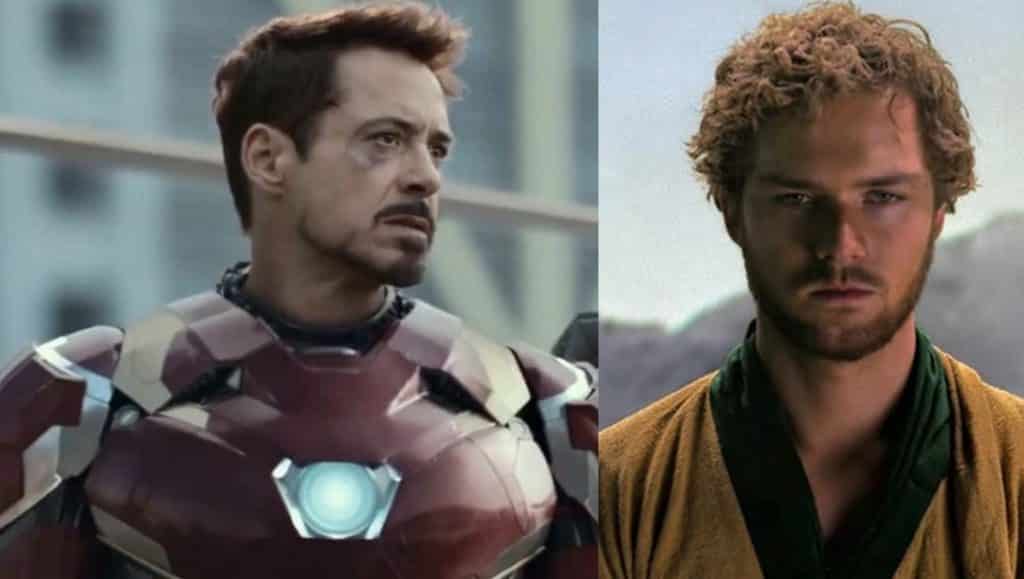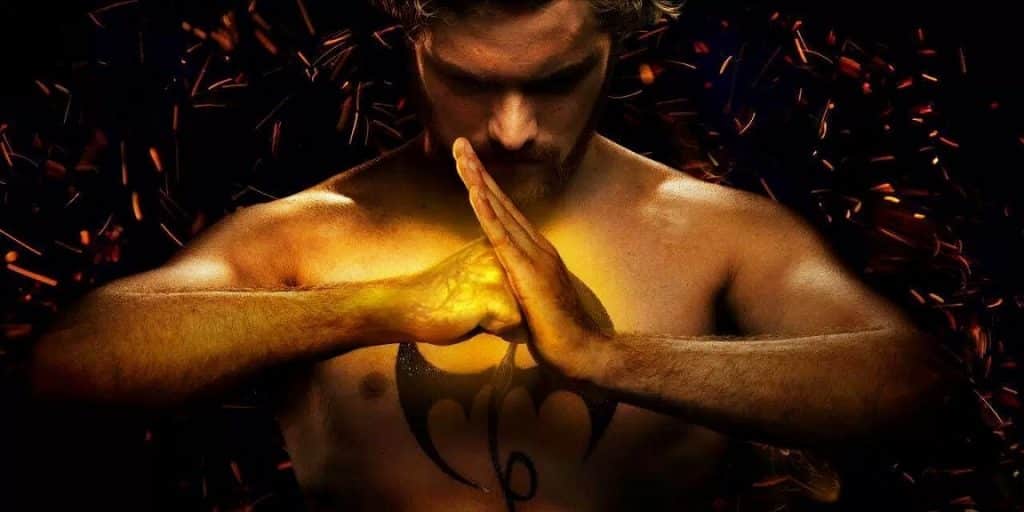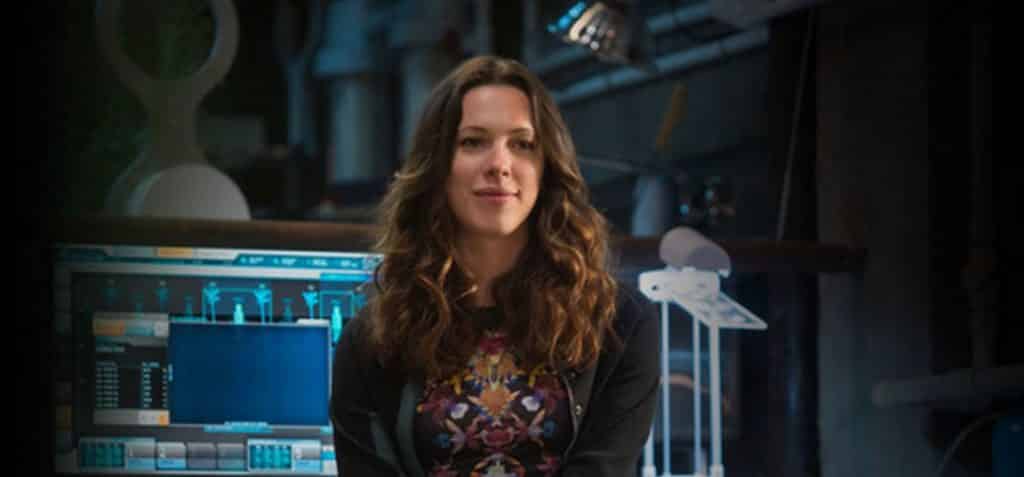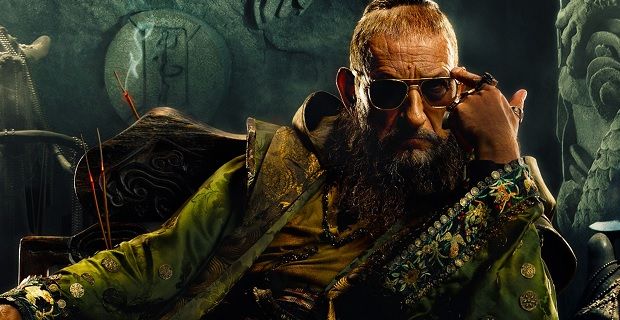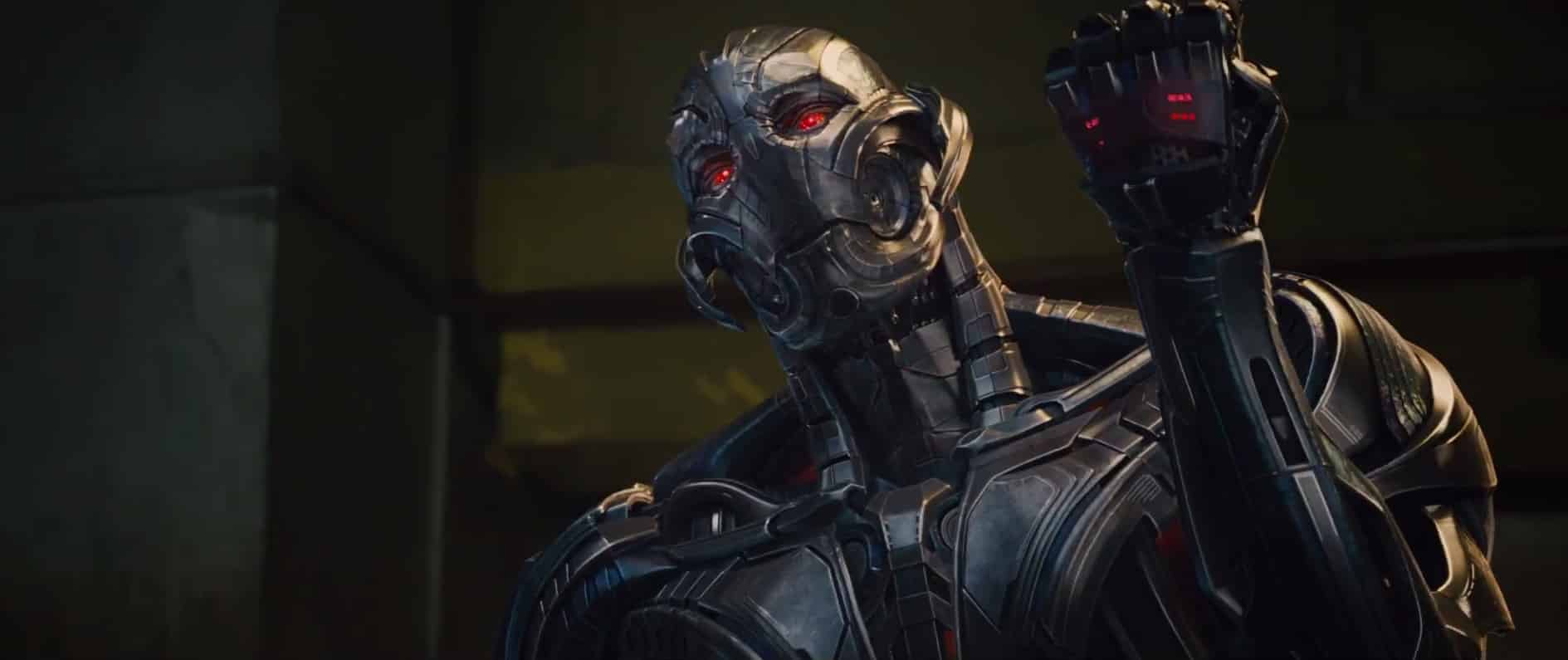Next year sees Marvel celebrating the 10th birthday of the Marvel Cinematic Universe. That’s right, as Avengers: Infinity War finally debuts in theaters, it really will have been a whole decade of your life that’s elapsed since Robert Downey Jr. first announced to the world that he was indeed Iron Man.
It’s fair to say that the MCU has wildly exceeded any of the expectations that Marvel originally had in mind for it. The vision they conceived for their franchise was revolutionary, pinning the studio’s financial future on an ambitious forward-facing blueprint which was dependent on audiences buying into talking trees, sentient items of magical clothing, and a big purple space alien wearing a shiny metal glove.
And buy into it, they did. 16 movies later, the project has made a staggering 12.4 billion dollars, with a further 10 titles already in various stages of production. Though t’s not just the numbers alone that are a benchmark of Marvel’s true success, but also the way in which their properties have been received globally.
The MCU movies have been pretty much universally loved by both audiences and critics alike. They’ve utterly rebooted the entire comic book genre, and commentators are still trying to invent new words to describe exactly how culturally embedded the Marvel brand has now become.
Life can be a pretty hellish and lonely place for the Marvel haters. Ten years in, and they’re still sat at their keyboards, sharpening their knives, waiting for a bad Marvel movie to validate their miserable existences, and give them something meaningful to write in their articles and forum posts.
Of course, some Marvel movies have proven less popular than others. And as the company has continued to raise the bar, year on year, with how they craft their characters and the quality of their visual effects, a degree of commonality has crept into some of the MCU storylines which fans genuinely feel could have been done just that little bit better.
No matter how fanatical and devoted a fan you are, we’re betting that there are at least one or two opportunities you feel that Marvel could have done more with, or decisions that you didn’t agree with. So have a look at our list of what we feel the 10 biggest missteps the MCU has seen so far, and see if you agree with us:
10. Vision
Perhaps the most obvious side-effect of the success of the Marvel movies has been the huge growth in sales of the original source material. The MCU opened the doors of comic book shops to a demographic of cinema-goers who would previously have mocked the idea of buying graphic novels, as they now flocked to research their favorite characters and try to second guess where the franchise would go next.
Naturally, as Marvel has slowly worked its way though their heavy-hitters, they’ve started to turn to some of their lesser known and riskier properties to populate future film releases. Some of these characters have been included due to calls from fans, and others simply because they were once principal players in the older storylines, and are necessary to make the current narrative work. That doesn’t necessarily mean they’re a good choice though.
Vision is a perfect example of this. A key member of the traditional Avengers lineup, and also a vital component of the Ultron backstory, it was investable we’d see him crop up in the MCU in some form. But did that form have to be Paul Bettany looking like some kind of sub-par Power Rangers villain? Marvel have made their name off finding innovative and subtle ways of representing their more outlandish characters onscreen, but slathering their existing Jarvis actor in leery colored prosthetics is not one of their better attempts.
The MCU incarnation of Vision is a deeply uncomfortable creation. Too powerful to be defeated, but too shallow to be a main player, Bettany is relegated to providing painstakingly unfunny comic relief at the sidelines of the real action. I mean, seriously. Bizarre conversations about cooking with Paprika and stalky jokes about not using doors? It’s painful to watch…
9. Iron Fist
It all started out so well for Marvel’s collaboration with Netflix. When the blueprint for the ‘Defenders’ project was unveiled, the internet went bat-shit crazy. Having struggled through un-engaging opening seasons of ‘Agents Of SHIELD’ and ‘Agent Carter’, it was finally apparent that Marvel were going to invest some serious time and money into the TV part of the MCU.
‘Daredevil’ and ‘Jessica Jones’ were huge successes with both the critics and viewers alike. The perfect mix of deep and searching character development, offset against eye-flinchingly brutal fight scenes. As season 2 of ‘Daredevil’ drew to a close, having blown fans away with the introduction of Jon Bernthal’s tragic Punisher, it was hard to see how things could get any better.
And… they didn’t. Then next installment of the series to land was ‘Luke Cage’, which received muted praise, but a worryingly persistent feeling of dissatisfaction. Whilst the show was praised for its cultural references and engaging villains, the fact it’s main character couldn’t actually be harmed took the tension out of most of the set pieces. The season finally ended wrapped things up on somewhat of a damp squib: but worse was to follow…
‘Iron Fist’ has unfortunately been the most high profile misstep that Marvel have suffered to date. With a poorly written, uncharismatic lead character, a rambling narrative filled with pointless supporting characters, and some really lazy fight sequences, it left critics cold, and audiences scratching their heads.
Releasing a ‘Heroes For Hire’ series that had introduced both Luke Cage and Danny Rand at the same time would have most likely have produced much better results, with the banter between the two lead characters compensating for their weaker individual narratives. Hopefully the lessons have now been learned and the series can get back on track with the eventual arrival of the ‘Defenders’ this month.
8. Maya Hansen
Let’s not sugarcoat this, Iron Man 3 was bad. Really bad. Bad to the extent that it would take a whole article of its own to try and cover all the flaws and issues associated with the making of that movie. The studio somewhat naively banked on the likability of the character, with some big names thrown in to the mix for a supporting cast and a couple of explosive set pieces, hoping it would paper over the cracks in Shane Black’s paper thin script. It didn’t…
The story of how the Extremis armor came to be created, and the issues it bought to how Tony lived his life afterwards is a big party of the Iron Man backstory.
Here, it was clumsily adapted to power the movie’s bad guys, creating corny flame breathing meta-humans. Tony found himself facing off against an utterly irrelevant James Badge Dale, a two dimensional Guy Pearce, and a truly ill-conceived Ben Kingsley. (More on him later…)
And as if that plot wasn’t cluttered enough, it also had to find room to accommodate Rebecca Hall, mysterious Maya Hansen. Hall came into the project on a roll, having given recent killer performances in ‘The Prestige’, ‘The Town’ and ‘Frost/Nixon’, and she was the perfect fit to play the sinister scientist. Alas, Hansen’s role in the movie is as uncomfortable as everything else, and it’s a credit to Hall that she can do anything with the role.
The character is presented as as a whole host of functions for Tony, including an ex, an ally, a rival, and ultimately yet another villain. In fact, she proves so much of a headache for Shane Black that he decides to remove the problem by having her shot in the head halfway through proceedings.
If this was designed to be something shocking, it fails miserably, neither adding menace to Guy Pierce’s character, or contributing anything to the situation Tony finds himself in. At the exact point that Hall is getting the chance to expand on her character, and to engage with an audience, she’s considered surplus to requirements. Which is pretty dumb; as she would have been perfect to bring back in the future to cause further friction between Tony and Pepper.
7. Dormammu
Much as had previously occurred with ‘Ant Man’, there was a general feeling that ‘Doctor Strange’ fell just that little bit short of the hype that had been built up around it. Both films are perfectly functional, and are filled with humorous Easter Eggs and in-jokes, but can’t escape the fact that at their core – this is the same old ‘Insert Origin Story Here’ format that Marvel have now done to death.
With it’s cityscape-bending special effects, ‘Doctor Strange’ in particular came in for some criticism for copying ‘Inception’. That, and the fact it’s always embarrassing when the fans end up loving a film more for the post-credits sequence, rather than anything that happened in the actual movie.
Putting those issues to one side, though, the film’s conclusion has gone on to become something of a cult classic for Marvel fans.
The decision to stage the movie’s closing scenes across an ‘Edge Of Tomorrow’ style dust-up between Strange and Dormammu was a brave one, which succeeded in no small part due to a killer performance from Ben Cumberbatch. Which is ironic, as the only factor that unfortunately lets the sequence down a little, is Ben Cumberbatch.
It was never going to be an easy task to create a convincing live-action version of Dormmamu. Because, essentially, he’s a huge disembodied head. That’s on fire. But pretty much anything would have been better than the neon, mess of CGI that the movie finally settled on. No matter how good a voice actor Cumberbatch may be, it doesn’t assist the weak animation he’s having to lend it to.
It transpires that originally, the project had lined the fabulously voiced Tony Todd to represent the demonic villain. The truth is, Dormammu could have been represented in any way, shape or form, as long as one fleeting glimpse of his flaming-headed form was shown somewhere along the line, with Todd’s vocals making for a far better fit.
6. Crossbones
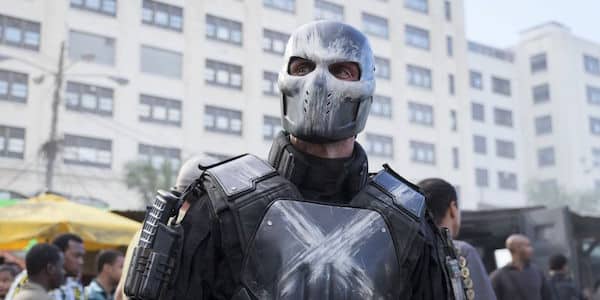
For a significant number of Marvel fans, Captain America: The Winter Soldier remains the benchmark that all the other MCU films should aim to hit. The perfect balance of deep character development, ultra realistic special effects and breathtaking fight sequences, it was the perfect way for the studio to do the character of Steve Rogers cinematic justice.
One of the standout performances from that movie (which is no mean feat considering the strength of the cast list) was that of Frank Grillo. As self-assured and likable as he was physically intimidating, his portrayal of turncoat SHIELD heavy-hitter Brock Rumlow was a rare example of Marvel getting it right with how to introduce a realistic and believable villain.
As he transitions from friend to foe, it’s hard not to keep rooting for Rumlow on some level. He can’t even hope to compete physically with his opponent, but he just keeps on trying, right up until the point that he gets half a building dropped on his face. This was the perfect setup for future appearances, badly physically scarred and hungering for revenge, ‘Winter Soldier’ left the fans eagerly awaiting the return of Crossbones.
And with the character’s return, Grillo didn’t disappoint. Ruthlessly dispatching everything in his path, and sporting a pair of nifty hydraulic fists, he spouts a heart-rending monologue that nearly wins him the battle, before being hurriedly bumped off in order to introduce the Wakandan part of the storyline.
Of course, with Marvel, it’s not impossible we’ll get to see Grillo return to the MCU in some fashion, but barring a flashback, it’s hard to see how Crossbones will return again. Which is a massive waste of such an engaging character. ‘Agents Of SHIELD’ has burned through a whole host of boring and forgettable HYDRA agents, wouldn’t if have been better to retain Rumlow for a future appearance in that?
5. Hawkeye & Black Widow
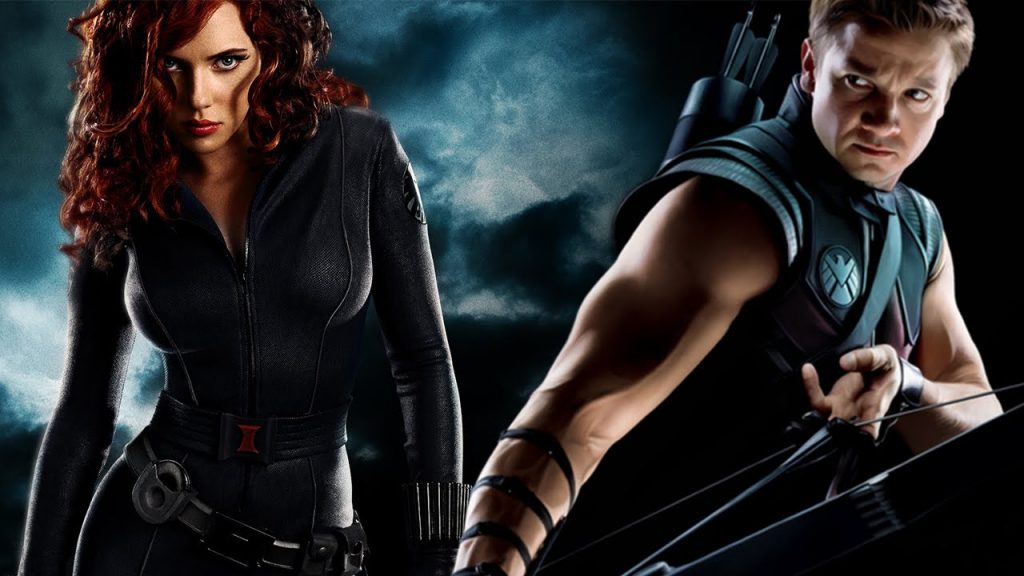
Ever since 2012’s The Avengers fans have been crying out to discover what exactly did happen back in Budapest, and for a ‘Black Widow’ solo movie – but Marvel have stubbornly refused to entertain the idea.
They must now be kicking themselves having seen how successful DC’s ‘Wonder Woman’ project has proven to be.
The material is clearly there for the taking, as Natasha’s past has repeatedly been referenced, from her previous run-ins with the Winter Soldier, to her vicious training program that combines classical dance with kickboxing.
It’s not just her, fellow Avenger Clint Barton’s backstory also still remains fully unexplored.
Again, it’s not like the appeal and the material isn’t available. Marvel were brace enough to use Barton as the tender human side of the team in Age of Ultron, but not to give him a solo outing. It’s entirely understandable why the studio won’t sanction a new Hulk movie, given the fact they’ve tried several times and each has failed, but surely Jeremy Renner and Scarlett Johansson have earned the right to try?
It is, of course, possible that now Marvel have green-lit ‘Captain Marvel’ and chosen to set that story in the 1990’s, that we might now eventually get to see something of the SHIELD origins of Hawkeye and Black Widow. It would certainly be a fair way to acknowledge the part that the two characters have played in founding and building up the MCU.
4. The Mandarin
Alas, it’s back to Iron Man 3 we have to go now, and one of Marvel’s most widely acknowledged and notorious of mistakes. Hiring one of the creative minds behind the ‘Lethal Weapon’ franchise, and a writer of quality crime thrillers such as ‘Kiss Kiss Bang Bang’, ‘The Long Kiss Goodnight’, and ‘The Nice Guys’, Marvel would have been expecting something innovative and slick from the industry favorite that is Shane Black. What they got was anything but.
Although peppered with visually impressive action set-pieces, and the requisite number of RDJ one-liners, the actual script for the movie was exceedingly poor. And in no place was it worse, than Black’s big reveal halfway through proceedings that murderous super villain The Mandarin was actually a drunk British Stage actor – called Trevor…
The Mandarin had already arguably been mishandled once, introduced as a supporting villain in the first Iron Man movie, and the fact that the third film had set out to reinvent him should have been joyous. Instead, Sir Ben Kinglsey’s uncomfortable transition from psycho terrorist to sozzled theater actor reflects just how much he was buying into the concept.
It’s neither clever or convincing. Whatever Black was attempting here, doesn’t work, and not even a further reveal that there’s YET ANOTHER real Mandarin in a subsequent one-shot helps to ease the pain. The movie is cluttered enough with thinly sketched characters, and Trevor Slattery’s buffoonery proves to. E the final straw for audiences.
3. Lack of Risk
Having enjoyed eight years of unopposed dominance at the Box Office, 2016 was the first time that Marvel suddenly found itself with a straightforward fight on its hands. Not only did it have to compete with two massively hyped up DC releases, it also had to contend with the Star Wars franchise, as well as encroachments from its own properties.
Marvel is a company that prides itself on planning ahead, with phased release schedules and a tendency to cater for fan feedback and demand is it goes along. But the marketplace is growing ever more crowded with comic book material, and there is an urgent need to be fresh and innovative, which Marvel doesn’t seem to be acknowledging.
Whilst they continue to add to their burgeoning roster of live-action characters, mixing generic origin story movies with larger crossover events, there’s a growing feeling amongst audiences that we’ve seen this all before, as the competition is trying new and exciting things.
From the R-rated Deadpool to DC’s decision to give a female character her own movie – Marvel seems to be continually playing catch up to new developments and themes – banking on fan loyalty to see them through.
For all their good aspects, risk-taking isn’t one of their strong points. As well as very public fallouts with Edgar Wright and Joss Whedon, both of which left to those Directors walking away from the studio, they also courted but failed to secure Patty Jenkins to direct Thor 2.
If they stick to their current repetitive style of film making, the only surprise they have left to shock audiences will be to kill off some major characters. Another area they’ve traditionally struggled to do well in.
2. Ultron
Whilst nowhere near as flawed an offering as Iron Man 3, Avengers: Age of Ultron proved to be a relatively uncomfortable lesson for the company. Of course, as you’d expect from Marvel, it’s naturally not a bad film. But this was the first time that one of the franchise’s big ‘event’ movies met with reviews that actually had something notably negative to offer its makers.
The issue of poorly conceived and depicted villains is in no way a problem specific to Marvel, but it is acknowledged as one of their main weaknesses. And any villain that requires the use of a significant amount of makeup or CGI is always going to have to work that little bit harder to win the critics over. With a monologue-heavy script, and some heavy lifting from James Spader, Joss Whedon tried his best to create in Ultron a villain worth bringing back in for future movies, but once again sadly failed to make the grade.
The fact that this is a seemingly invincible villain that can endlessly replicate himself somewhat limits the opportunity that audiences have to engage with him as a character. He’s never really under much threat from the Avengers. And, much as with the big fight sequence in ‘Iron Man 2’, the majority of the antagonists being mindless drones, controlled by the main bad guy completely undermines any real sense or engagement for the individual battles each Avenger undertakes.
Which is a shame, because ‘Age Of Utron’ sets up a lot of key themes for future movies; but then falls apart at the final hurdle. The divisions between Tony and Steve are coming to the fore, Hawkeye’s true nature starts to be revealed, and nightmarish predictions for ‘Infinity War’ also come to pass. But these get lost amidst a blizzard of shiny CGI robots getting pointlessly bounced off buildings.
1. The TV/Movie Divide
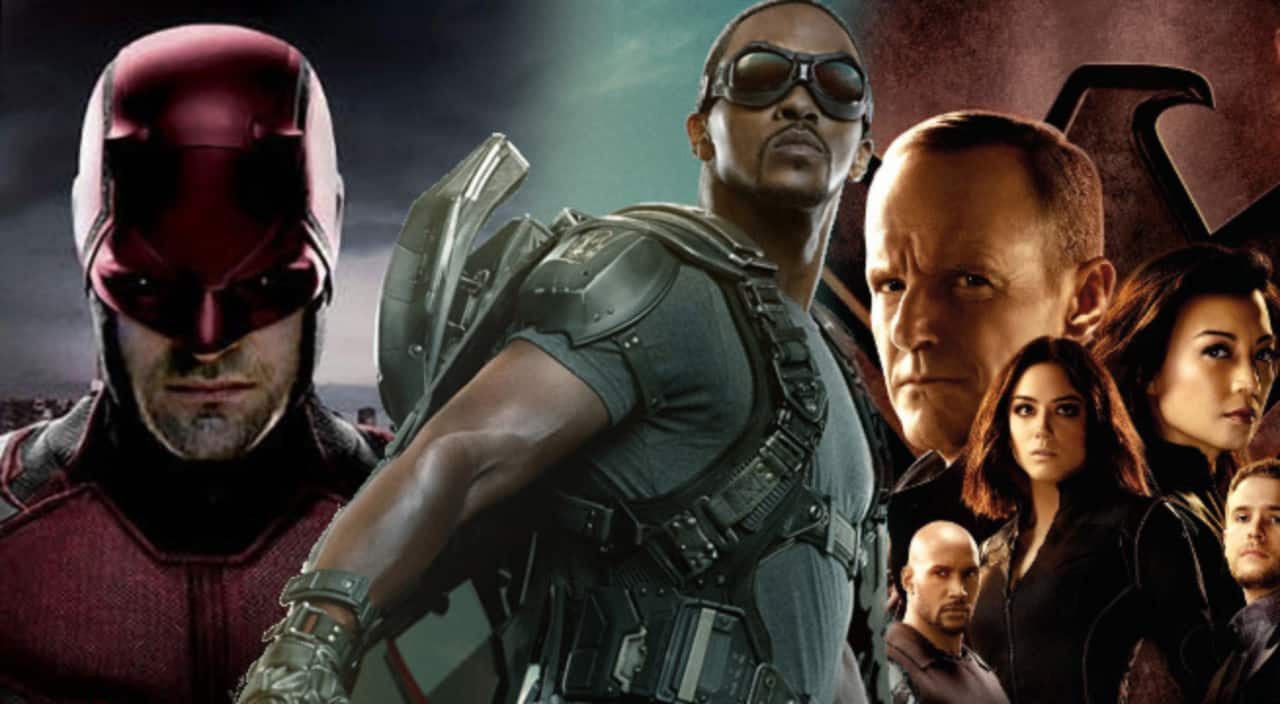
The most heartbreaking ‘Civil War’ at play within the confines of the MCU surprisingly isn’t a conflict between Steve and Tony, but is instead between the TV and Motion Picture arms of Marvel Studios. Ever since the opening season of Agents Of S.H.I.E.L.D, which was or originally announced as an accompanying piece to the Avengers movies, the two aspects of the franchise have been forced to engage in a deeply uncomfortable long-term relationship.
Despite an initially underwhelming debut, Marvel’s televisual output has steadily grown in strength, to the point where it now commands as much hype and notoriety as its cinematic bedfellow. But whilst existing MCU characters are frequently referenced in the TV shows, and enjoy the occasional cameo, this deal is very much a one-way street.
It’s still a matter of huge bewilderment to the fans why there is such strong resistance to allow Marvel TV properties to feature in the films. This is an issue that has become even more heightened by the recent successes of the Marvel/Netflix collaborations.
Why wouldn’t the studio want Daredevil or The Punisher to appear alongside Captain America. What’s the point in keeping SHIELD alive if not to reunite Coulson with the Avengers?
A whole sub-culture has emerged with fan forums and click-bait sites seizing on every social media post or set photo featuring a Marvel actor, wildly hypothesizing when the TV characters will get a chance to assemble alongside their Big Screen counterparts. And why the hell shouldn’t they? I’d argue that in most cases, they’ve more than earned the right.
As long as Marvel continue to run their TV shows in a manner strictly divorced from the rest of the MCU, they will be frustrating and infuriating their fans. And with forthcoming shows such as ‘Inhumans’ already looking dead and buried before they’ve even launched, combining the two platforms will most likely be the only way to assure the survival of the televisual properties in an ever more competitive environment.

